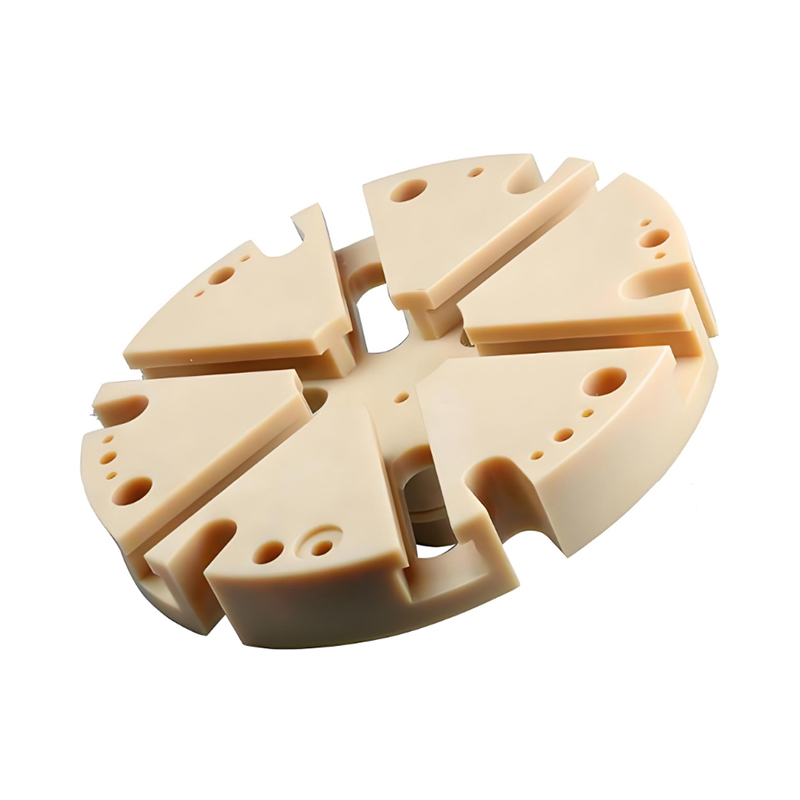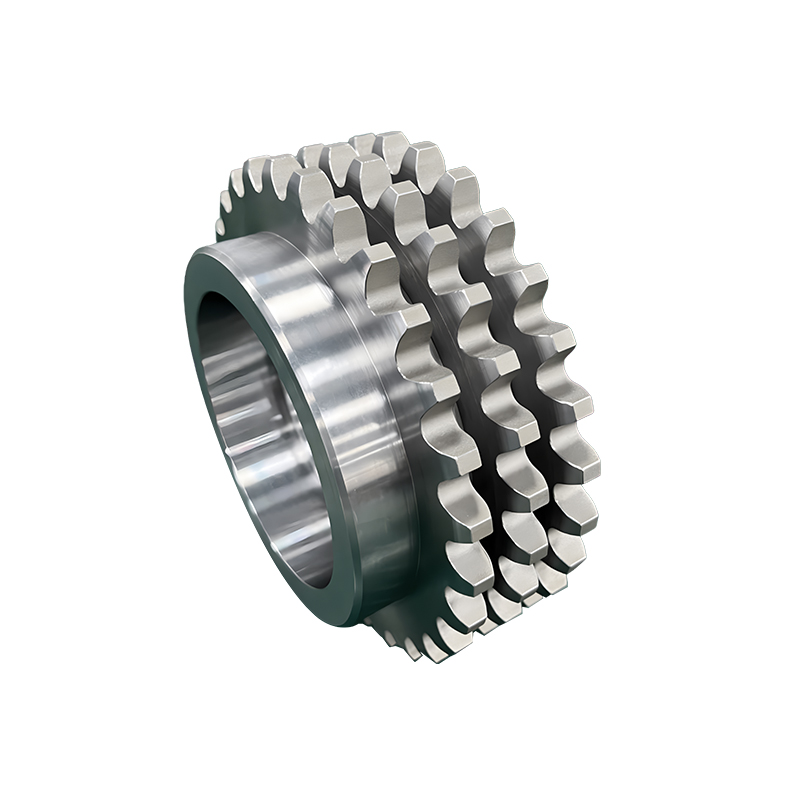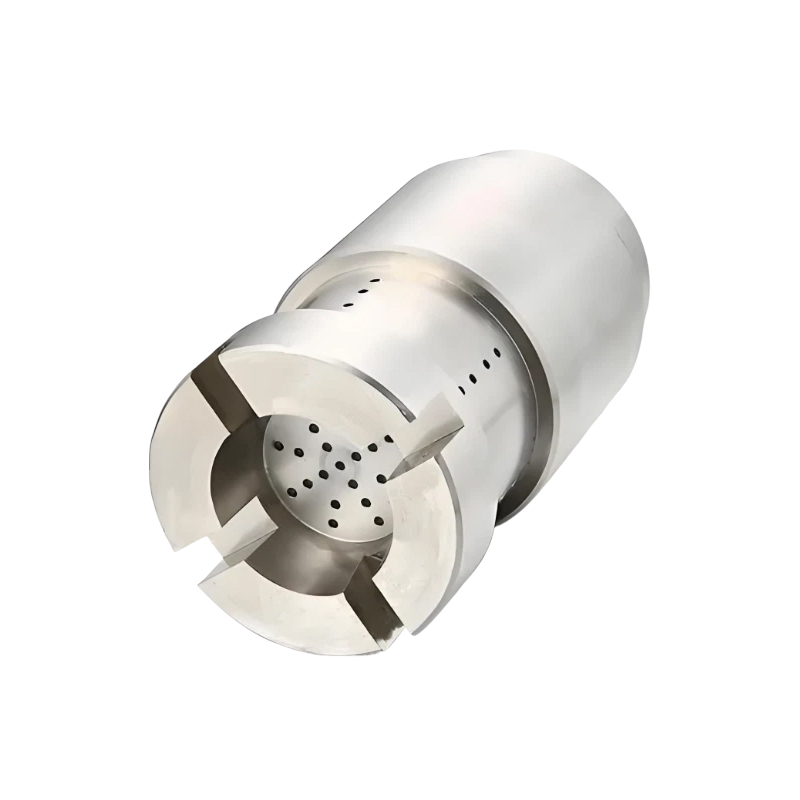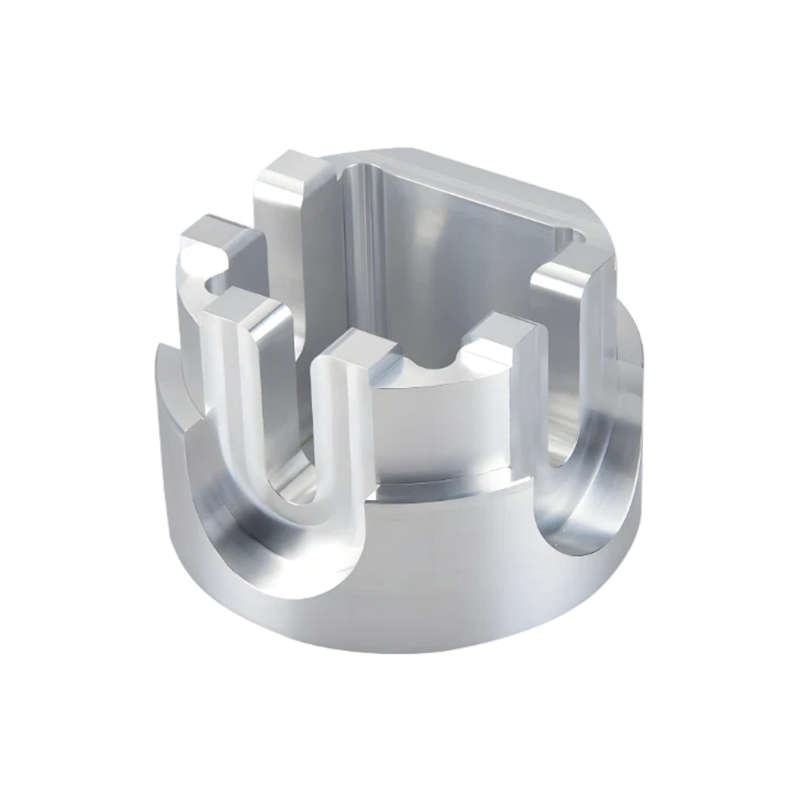How do stainless steel parts show excellent corrosion resistance?
Release Time : 2025-06-30
Stainless steel parts are widely used in many industries for their excellent corrosion resistance and have become the material of choice in many critical applications. This feature not only increases the service life of equipment and structures, but also reduces maintenance costs and ensures long-term stable operation. The reason why stainless steel can perform well in various harsh environments is mainly due to its unique chemical composition, microstructure and advanced surface treatment technology.
First of all, the core of stainless steel lies in its alloy composition, especially the presence of chromium. When chromium comes into contact with oxygen, it forms an extremely thin but very stable chromium oxide film on the metal surface. This film can not only effectively prevent further oxidation reactions, but also self-repair. When it is slightly scratched or damaged, the exposed chromium will quickly combine with oxygen in the air to regenerate a new protective film. This feature allows stainless steel to maintain good corrosion resistance even in humid and salty environments, avoiding functional failure or appearance damage caused by rust.
Secondly, in addition to chromium, other alloying elements such as nickel and molybdenum are often added to stainless steel. Nickel enhances the toughness of stainless steel, allowing it to maintain excellent mechanical properties in low temperature environments; while molybdenum significantly improves the resistance of stainless steel to chloride stress corrosion cracking, especially for highly corrosive media that may be encountered in marine environments or chemical production. By rationally adjusting the proportions of these alloying elements, stainless steel materials that meet the needs of different application scenarios can be manufactured to ensure that machined parts can perform at their best under specific working conditions.
In addition, the microstructure of stainless steel also has an important influence on its corrosion resistance. Austenitic stainless steel has a face-centered cubic lattice structure, which gives the material excellent toughness and good weldability, while showing excellent corrosion resistance in most environments. In contrast, martensitic and ferritic stainless steels have higher hardness, but may be brittle or have lower corrosion resistance under certain conditions. However, through the optimization of heat treatment processes, the comprehensive properties of these two types of stainless steel can also be improved, making them suitable for more occasions. Duplex stainless steel combines the advantages of both austenite and ferrite structures, providing higher strength and better resistance to pitting and crevice corrosion, and is particularly suitable for demanding seawater desalination and chemical equipment fields.
Furthermore, modern stainless steel parts usually undergo a series of surface treatment processes to further improve their corrosion resistance. For example, pickling and passivation can remove surface impurities and enhance the thickness of the naturally formed oxide film, making the surface of the parts smoother and flatter, and reducing the chance of corrosive media adhesion. Electropolishing removes tiny protrusions on the surface through electrolysis, achieving a mirror effect while also forming a denser passivation film. In addition, there are surface modification technologies such as coatings and plating, which can select appropriate protective measures according to the specific use environment. For example, epoxy resin coating has a good effect on resisting chemical solvent erosion, and PVD (physical vapor deposition) coating can provide multiple functions such as wear resistance and high temperature resistance, which greatly expands the application range of stainless steel.
It is worth noting that the design and manufacturing process of stainless steel parts also has a direct impact on the corrosion resistance of the final product. Reasonable structural design helps to avoid dead corners of liquid accumulation and prevent local areas from accelerating corrosion due to long-term water accumulation. Precision machining accuracy can not only ensure that the dimensional tolerance meets the requirements, but also ensure that the surface roughness is at an ideal level and reduce potential corrosion sources. At the same time, during the assembly process, attention should be paid to preventing galvanic corrosion caused by direct contact of dissimilar metals, which is also one of the key factors to improve overall corrosion resistance.
In short, stainless steel parts have demonstrated excellent corrosion resistance due to their inherent alloy composition, microstructure advantages and external surface treatment methods. Whether in harsh industrial production sites or in every corner of daily life, stainless steel can win the trust of users with its reliable performance. With the advancement of science and technology and the research and development of new materials, it is believed that stainless steel will play a greater role in more fields in the future and bring more durable solutions to all walks of life.
First of all, the core of stainless steel lies in its alloy composition, especially the presence of chromium. When chromium comes into contact with oxygen, it forms an extremely thin but very stable chromium oxide film on the metal surface. This film can not only effectively prevent further oxidation reactions, but also self-repair. When it is slightly scratched or damaged, the exposed chromium will quickly combine with oxygen in the air to regenerate a new protective film. This feature allows stainless steel to maintain good corrosion resistance even in humid and salty environments, avoiding functional failure or appearance damage caused by rust.
Secondly, in addition to chromium, other alloying elements such as nickel and molybdenum are often added to stainless steel. Nickel enhances the toughness of stainless steel, allowing it to maintain excellent mechanical properties in low temperature environments; while molybdenum significantly improves the resistance of stainless steel to chloride stress corrosion cracking, especially for highly corrosive media that may be encountered in marine environments or chemical production. By rationally adjusting the proportions of these alloying elements, stainless steel materials that meet the needs of different application scenarios can be manufactured to ensure that machined parts can perform at their best under specific working conditions.
In addition, the microstructure of stainless steel also has an important influence on its corrosion resistance. Austenitic stainless steel has a face-centered cubic lattice structure, which gives the material excellent toughness and good weldability, while showing excellent corrosion resistance in most environments. In contrast, martensitic and ferritic stainless steels have higher hardness, but may be brittle or have lower corrosion resistance under certain conditions. However, through the optimization of heat treatment processes, the comprehensive properties of these two types of stainless steel can also be improved, making them suitable for more occasions. Duplex stainless steel combines the advantages of both austenite and ferrite structures, providing higher strength and better resistance to pitting and crevice corrosion, and is particularly suitable for demanding seawater desalination and chemical equipment fields.
Furthermore, modern stainless steel parts usually undergo a series of surface treatment processes to further improve their corrosion resistance. For example, pickling and passivation can remove surface impurities and enhance the thickness of the naturally formed oxide film, making the surface of the parts smoother and flatter, and reducing the chance of corrosive media adhesion. Electropolishing removes tiny protrusions on the surface through electrolysis, achieving a mirror effect while also forming a denser passivation film. In addition, there are surface modification technologies such as coatings and plating, which can select appropriate protective measures according to the specific use environment. For example, epoxy resin coating has a good effect on resisting chemical solvent erosion, and PVD (physical vapor deposition) coating can provide multiple functions such as wear resistance and high temperature resistance, which greatly expands the application range of stainless steel.
It is worth noting that the design and manufacturing process of stainless steel parts also has a direct impact on the corrosion resistance of the final product. Reasonable structural design helps to avoid dead corners of liquid accumulation and prevent local areas from accelerating corrosion due to long-term water accumulation. Precision machining accuracy can not only ensure that the dimensional tolerance meets the requirements, but also ensure that the surface roughness is at an ideal level and reduce potential corrosion sources. At the same time, during the assembly process, attention should be paid to preventing galvanic corrosion caused by direct contact of dissimilar metals, which is also one of the key factors to improve overall corrosion resistance.
In short, stainless steel parts have demonstrated excellent corrosion resistance due to their inherent alloy composition, microstructure advantages and external surface treatment methods. Whether in harsh industrial production sites or in every corner of daily life, stainless steel can win the trust of users with its reliable performance. With the advancement of science and technology and the research and development of new materials, it is believed that stainless steel will play a greater role in more fields in the future and bring more durable solutions to all walks of life.







